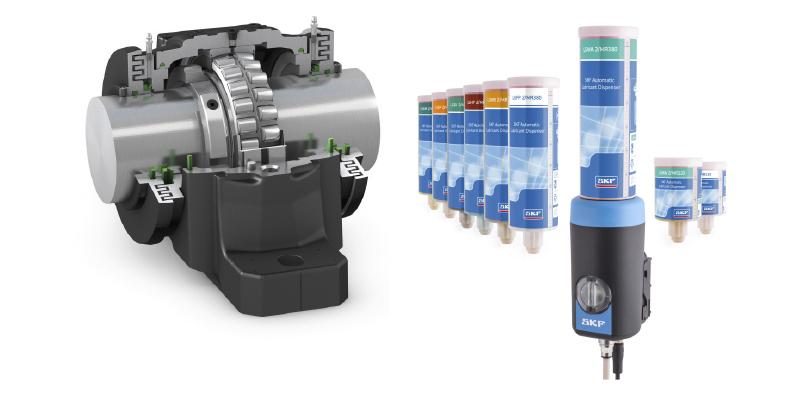Material handling is the process of moving materials or objects from one point to another, usually with equipment designed to operate in an effective and efficient manner. Although material handling may often be thought of as belt conveyors, it also covers applications such as robots, cranes, elevators and escalators. One of the key driving factors for material handling is reliability, which as the result of a failure can result in unplanned downtime and production loss.
Sealed bearings
In the food and beverage, mining and mineral processing and timber industries there are a large number of conveyors to move product through the plant with moderate to high contamination levels in the surrounding environment. Although the bearings themselves often require very little lubrication, frequent greasing is often used as preventative maintenance to keep contamination out of the bearings to improve reliability. Every time a bearing is greased there is an opportunity for contamination to enter, and in the case of insert bearings, excessive grease can result in the seals being pushed out of the bearings.
SKF offer a range of Y-bearings with effective sealing design to keep contamination out of the bearings and allow for relubrication free operation under many conveying conditions with the 2RF seal used on Industrial and Food Line Y-bearings showing good success.
In larger bulk conveying applications using roller type bearings the SKF three barrier solution using the SKF sealed spherical roller bearings have proven to be extremely effective at excluding contamination under harsh operating conditions while reducing grease consumption. Addition of the improved SKF taconite seal with axial labyrinth design makes installation easier and increases the effectiveness of the overall sealing system.
Sealed spherical rollers and Solid Oil variants have also proven very effective on inclined auger applications where contamination from the process and environment can often lead to premature failure.
Automatic lubrication
The nature of some plants requires materials or objects to be lifted or lowered to areas where access is difficult and make maintenance tasks challenging and health and safety requirements can be either costly or require the process to shut down for access. The use of remote grease lines in hard to reach locations has improved maintenance, however this is not always a suitable solution.
Single point and multi-point lubricators have provided consistent reliable lubrication for hard to reach points with LAGD gas powered lubrication units and TLSD battery powered systems. SKF TLMR units are available in 120 and 380ml reservoir sizes and can be operated by external 12-volt supply or internal battery with lubrication periods up to 24 months allowing long term lubrication.
For applications where serval lubrication points are close together, the SKF MultiPoint TLMP lubricator can provide accurate lubrication along with machine steering to start and stop the lubrication system. The TLMP unit can lubricate between one to 18 lubrication points and has a maximum lubrication distance from the unit of five metres. Where additional points, length or customisation is required, SKF has a large range of options to build a suitable system.
For further information, contact your local authorised SKF distributor or email customerservice.nz@skf.com






